Blog
1. Who Was Jonathan Joss?

Jonathan Joss was a well-known Native American actor, admired for bringing honesty and heart to the roles he played. Born on December 22, 1965, in San Antonio, Texas, he belonged to the Comanche and White Mountain Apache tribes. Throughout his career, Joss worked hard to represent Native American people in a respectful and meaningful way on screen.
2. Early Life and Background
Jonathan grew up in San Antonio, where he was surrounded by the traditions of his Native American roots. He went to McCollum High School, then studied theater and speech at Our Lady of the Lake University. His heritage and early life experiences helped shape the roles he chose in his acting career, always aiming to honor his culture.
3. Acting Career Highlights
Jonathan Joss had a career that lasted over 30 years, with roles in both TV and film. He stood out for choosing characters that shared Native American stories and identities.
Must read https://wordlehint.uk/anna-zauner/
- Iconic Role John Redcorn in King of the Hill
One of his most famous roles was John Redcorn, a Native American healer, in the animated series King of the Hill. His voice acting added personality and depth to the character. This role also helped bring attention to how Native Americans are portrayed in media, starting important conversations.
- Funny and Smart Ken Hotate in Parks and Recreation
Another fan-favorite role was Ken Hotate, the smart and witty leader of the fictional Wamapoke tribe in Parks and Recreation. Joss used humor to point out how Native American communities have been treated in the past, all while making people laugh.
4. Other TV Shows and Films
Jonathan Joss acted in several well-known shows and movies. Some of his notable appearances include:
- The Magnificent Seven (2016)
- True Grit (2010)
- Walker, Texas Ranger
- Dr. Quinn, Medicine Woman
Each time, he brought strength and authenticity to his characters.
5. Voice Acting and Video Games
Joss also did voice acting for popular video games. His voice added a layer of realism to the games, especially when portraying Native American characters. He was featured in:
- Days Gone
- Ghost Recon: Wildlands
- Red Dead Redemption 2
His voice work was praised for being genuine and powerful.
6. Personal Life and Interests
Off-screen, Jonathan Joss had a passion for cooking. He loved making spices inspired by Native American cuisine. In February 2025, he married Tristan Kern de Gonzales. The couple shared a strong bond and supported each other in every aspect of life.
7. House Fire Tragedy in San Antonio
In January 2025, a heartbreaking fire destroyed Joss’s childhood home in San Antonio. He and his husband lost not only their house and personal belongings but also three beloved dogs. This incident deeply impacted both of them and marked a painful moment in their lives.
8. Tragic Death of Jonathan Joss
On June 1, 2025, Jonathan Joss was fatally shot outside his former home in San Antonio. The accused, Sigfredo Ceja Alvarez, a neighbor, was arrested and charged with murder. According to Joss’s husband, the shooting came after months of harassment. Joss had stepped in to protect his partner during the attack, showing his bravery in his final moments.
9. Tributes from Co-stars and Fans
After his death, tributes came pouring in. Fellow actors, creators, and fans expressed their sadness and love. Chris Pratt, who worked with him in Parks and Recreation, called him “a kind and genuine person.” Creators of King of the Hill and members of the Native American community also honored Joss for his work and his efforts to improve representation in the media.
10. Jonathan Joss’s Legacy
Jonathan Joss will always be remembered as a pioneer for Native American actors. He played important characters with respect, care, and cultural truth. His work helped open doors for more Native voices in Hollywood and inspired many to follow in his footsteps.
11. Complete Filmography
1. Movies
- 8 Seconds (1994)
- Almost Heroes (1998)
- Christmas in the Clouds (2001)
- True Grit (2010)
- The Magnificent Seven (2016)
2. Television
- Walker, Texas Ranger
- Dr. Quinn, Medicine Woman
- King of the Hill (1998–2009, 2025)
- Parks and Recreation (2011–2015)
- Tulsa King
3. Video Games
- Days Gone
- Ghost Recon: Wildlands
- Red Dead Redemption 2
12. Frequently Asked Questions (FAQs)
Q1: Was Jonathan Joss Native American?
Yes, he was of Comanche and White Mountain Apache descent.
Q2: What was his most famous role?
His best-known role was John Redcorn in King of the Hill.
Q3: Did he appear in Tulsa King?
Yes, he was part of the cast of Tulsa King.
Q4: What happened to his house?
In January 2025, a fire destroyed his home and took the lives of three dogs.
Q5: Who was arrested in connection with his death?
Sigfredo Ceja Alvarez, a neighbor, was arrested and charged with murder.
Q6: Did he have any children?
There is no public record of him having children.
Q7: What was Jonathan Joss’s net worth?
His exact net worth is not publicly known.
Q8: Was he active on social media?
Yes, he engaged with fans on Instagram and other platforms.
Q9: Was his death considered a hate crime?
The investigation is still ongoing; police have not officially labeled it as a hate crime.
Q10: How is he being remembered?
He’s being honored through tributes from actors, fans, and the Native community, all celebrating his impact on representation and storytelling.
13. Conclusion
Jonathan Joss lived a life full of passion, purpose, and pride in his heritage. He not only entertained audiences but also worked to break stereotypes and improve how Native American stories are told. His powerful performances and heartfelt roles have left behind a lasting legacy that will continue to inspire future generation.
Blog
The Traveler Hired the Wrong Tour Guide – A Costly Mistake

The Importance of a Good Tour Guide
A good tour guide can make or break your travel experience. More than just a person who shows you around, a reliable guide is a storyteller, a cultural ambassador, and a safety net.
Whether you’re exploring a bustling city or a remote destination, the right guide brings hidden gems to light and ensures your experience is smooth, informative, and enjoyable.
Role in cultural insight, safety, and local experience:
- Offers authentic knowledge and cultural context
- Helps you avoid tourist traps and unsafe areas
- Bridges language gaps and handles logistics
- Creates a deeper connection with the destination
Early Warning Signs You’ve Hired the Wrong Guide
Lack of Local Knowledge
If your guide seems unsure about routes, attractions, or local customs, that’s a major red flag. A professional guide should be well-versed in the destination’s history, culture, and geography.
Poor Communication or Language Barriers
Misunderstandings can quickly ruin a trip. If your guide struggles to communicate clearly or doesn’t speak your language well enough, frustration and confusion will follow.
Unprofessional Behavior or Appearance
Being consistently late, dressed inappropriately, or behaving disrespectfully is unacceptable. Tour guides should be reliable, respectful, and professionally presentable.

Deviating from the Promised Itinerary
If your guide keeps making unexplained changes to the schedule or skips key stops without reason, it’s a sign of poor planning or dishonesty.
Negative or Fake Online Reviews
Before hiring, always check reviews. A pattern of negative feedback or obviously fake 5-star reviews are strong indicators to stay away.
Real Travel Story – When Jake Hired the Wrong Guide
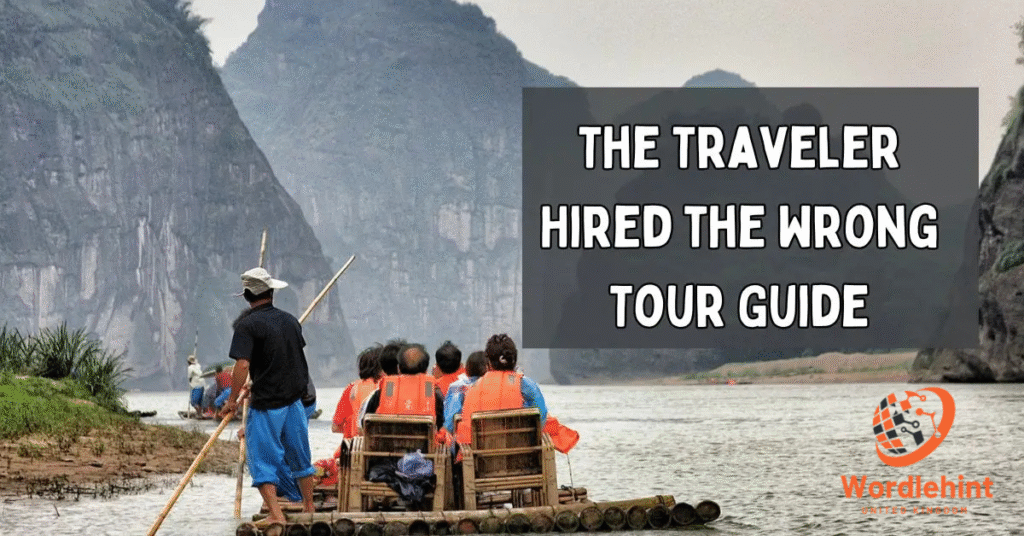
Planning a dream trip gone wrong: Jake booked a trip to Morocco through a third-party travel website. His guide claimed to be a local expert, but red flags quickly emerged.
Early red flags and ignored instincts: The guide arrived late, had limited knowledge of historical sites, and spoke broken English despite promises of fluency.
Safety scares and wasted money: Jake was taken to questionable neighborhoods and charged extra for “special access” to places that were actually free to enter.
Emotional impact of a bad guide: Jake returned home disappointed and stressed. What was supposed to be a cultural adventure became a frustrating ordeal.
Financial and Safety Consequences
Hidden Fees and Poor Budgeting
Bad guides often suggest overpriced shops or demand unexpected tips. This disrupts your budget and adds stress.
Unsafe Areas and Missed Experiences
You may be taken to unsafe neighborhoods or miss iconic sites simply because the guide didn’t plan well or wanted to cut corners.
Lost Time at Tourist Traps
Instead of exploring authentic attractions, you might spend hours at commercialized spots where the guide earns a commission.
Trust Issues and Emotional Burnout
Repeated disappointments drain your enthusiasm. Feeling unsafe or cheated leaves a lasting emotional toll.
What to Do If You’ve Hired the Wrong Tour Guide
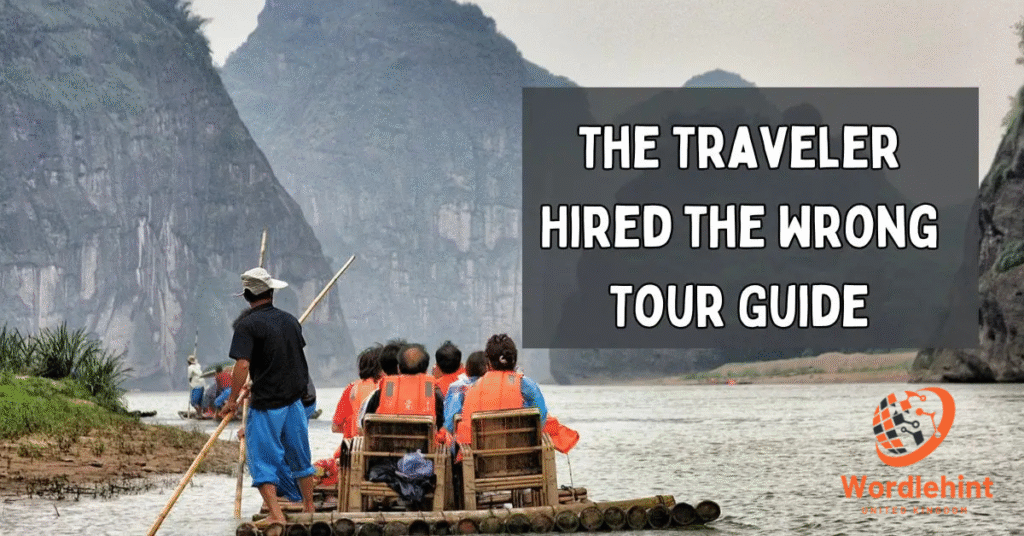
Speak Up – How to Address Concerns Politely
Voice your concerns calmly but clearly. Example: “I noticed we’re not following the itinerary. Could we please stick to the original plan?”
When and How to Request a Refund or Change
If the service is unacceptable, don’t hesitate to ask for a partial refund or a different guide. Use booking platforms for dispute resolution if necessary.
Safety First – Know When to Leave
If you feel unsafe, remove yourself from the situation. Return to your hotel or contact local authorities if needed.
Document Everything Photos, Notes, Recordings
Keep a record of interactions, places visited, and issues encountered. This is useful for complaints or refund requests.
Turn to Your Hotel or Booking Platform for Help
Hotels often have trusted local contacts. If you booked through an agency, notify them immediately and request support.
How to Research and Vet Tour Guides Properly
Read Reviews What to Look For
Look for consistent positive reviews on trusted platforms like TripAdvisor or Viator. Watch out for repetitive language in fake reviews.
Verify Credentials and Licenses
Ask for a copy of their license or guide ID. Many countries require tour guides to be certified.
Ask Pre-Booking Interview Questions
Questions like “What are your favorite hidden spots here?” or “Can I see a sample itinerary?” help gauge knowledge and attitude.
Use Trusted Platforms and Local Tourism Boards
Book through reputable sites or ask local tourism boards for certified guides.
Red Flags You Should Never Ignore
Low prices, no website or portfolio, vague answers, and pressure to book fast are warning signs.
Smart Tools to Help You Stay in Control While Traveling
Use eSIMs for Europe (Unlimited Max & Lite Plans)
Stay connected without roaming charges. eSIMs offer instant data access to search reviews, maps, and contact support.
Travel Apps for Self-Guided Tours
Apps like Rick Steves Audio Europe, GPSmyCity, and Google Maps offer offline tours and local tips.
Emergency Contact & Translation Apps
Keep apps like Google Translate and local emergency numbers handy for tough situations.
Lessons Learned – How to Turn a Bad Trip into a Positive One
Build Resilience and Flexibility
Bad experiences can teach you to adapt and think on your feet skills every traveler needs.
Learn to Trust Your Instincts
If something feels off, it probably is. Listen to your gut before committing.
Share Your Experience to Help Others
Post honest reviews and share your story to protect future travelers.
Leave Constructive Reviews (with Examples)
Explain what went wrong and how it could be improved. Keep it factual and respectful.
How to Find the Right Tour Guide Next Time
- Use trusted local agencies or referrals
- Ask specific questions before booking
- Compare multiple options
- Book in advance during peak season
- Always have a Plan B
FAQs
What are the signs I’ve hired the wrong tour guide?
Poor knowledge, bad communication, unprofessional behavior, and frequent itinerary changes.
Can I ask for a refund if the guide was bad?
Yes, especially if you booked through a platform or agency. Document your issues.
How do I check if a guide is licensed?
Ask to see their certification or check with local tourism boards.
What’s the safest way to book a guide?
Through verified agencies, apps, or hotel referrals.
Should I avoid cheap tours?
Not always, but if a deal seems too good to be true, research thoroughly.
How can I safely leave a tour I’m unhappy with?
Stay calm, communicate, and remove yourself safely. Alert your hotel or local support.
What tools help in a self-guided tour?
Audio guide apps, offline maps, and travel blogs.
What rights do I have as a traveler?
You can file complaints, request refunds, and contact local tourism authorities.
How can I write a helpful review after a bad guide?
Focus on facts. Mention what went wrong and how it impacted your experience.
Is it okay to travel without a guide?
Yes! Many travelers enjoy self-guided experiences using modern tools and apps.
Conclusion
A great guide adds depth, safety, and joy to your journey. With proper research and preparation, you can ensure your travel memories are positive.
A better trip begins with better prep.
Blog
Best Thailand Family Holiday Guide 2025 for First-Time Travelers

Why Thailand is the Best Family-Friendly Destination
Thailand captivates families with its vibrant mix of culture, adventure, and affordability. From bustling Bangkok to serene beaches, it offers something for every age. Friendly locals and safe, kid-friendly attractions make it welcoming for first-timers.
Explore ancient temples, lush jungles, or relaxing shores. Affordable accommodations and food suit tight budgets, while diverse activities keep everyone entertained.
Whether it’s elephant encounters or waterpark thrills, Thailand family holidays ensures fun for kids and relaxation for parents.The country’s infrastructure supports family travel, with English widely spoken in tourist areas.
Clean public transport and family-oriented tours simplify exploration. Thailand’s warm hospitality and endless discoveries create unforgettable memories.
Planning Your Thailand Trip: A Step-by-Step Guide
Organizing a family trip to Thailand requires simple steps to ensure a smooth adventure. Start early to secure deals and prepare for a hassle-free experience.
Essential Travel Documents
Check that all family passports are valid for six months beyond your travel dates. Depending on your country, Thailand offers visa-free entry or visas on arrival for many nationalities. Research requirements early and carry printed copies of bookings and IDs.
Vaccinations and Health Tips
Consult your doctor 4–6 weeks before departure for vaccinations like Hepatitis A, Typhoid, and routine shots (MMR, DTP). Pack a small first-aid kit with kids’ medications. Use bottled water and hand sanitizers to stay healthy.
What to Pack for Kids and Parents
Pack lightweight clothing, sunscreen, and mosquito repellent for Thailand’s tropical climate. Include kids’ favorite snacks, travel games, and coloring books for long journeys. Don’t forget swimwear and hats for beach days.

Planning Your Thailand Trip
Thailand at a Glance: Must-Know Facts
Thailand Family Holidays offers families a vibrant, accessible destination. Knowing key details helps you navigate with ease and enjoy your trip fully.
- Capital: Bangkok
- Currency: Thai Baht (THB)
- Language: Thai (English common in tourist spots)
- Time Zone: GMT+7
- Emergency Number: 1155 (Tourist Police)
These facts ensure you’re prepared for communication, payments, and emergencies. Thailand’s tourist-friendly environment makes it easy to connect with locals and explore confidently.

Best Time to Visit Thailand With Kids
Choosing the right time for your Thailand family trip maximizes fun and comfort. Each season offers unique experiences tailored to different preferences.
Cool, Dry Season (Nov–Feb)
This season’s mild weather (20–30°C) is perfect for families. Beaches shine, and festivals like Loy Krathong captivate kids. Book early as it’s peak season with higher prices and crowds.
Hot Season (Mar–May)
Temperatures soar (30–40°C), so plan early morning or evening outings. Stay hydrated and visit indoor attractions like museums or malls. Fewer crowds mean better deals on accommodations.
Rainy Season (Jun–Oct)
Short showers don’t dampen fun. Lower costs and quieter attractions make this ideal for budget travelers. Indoor activities like cooking classes or aquariums keep kids engaged.
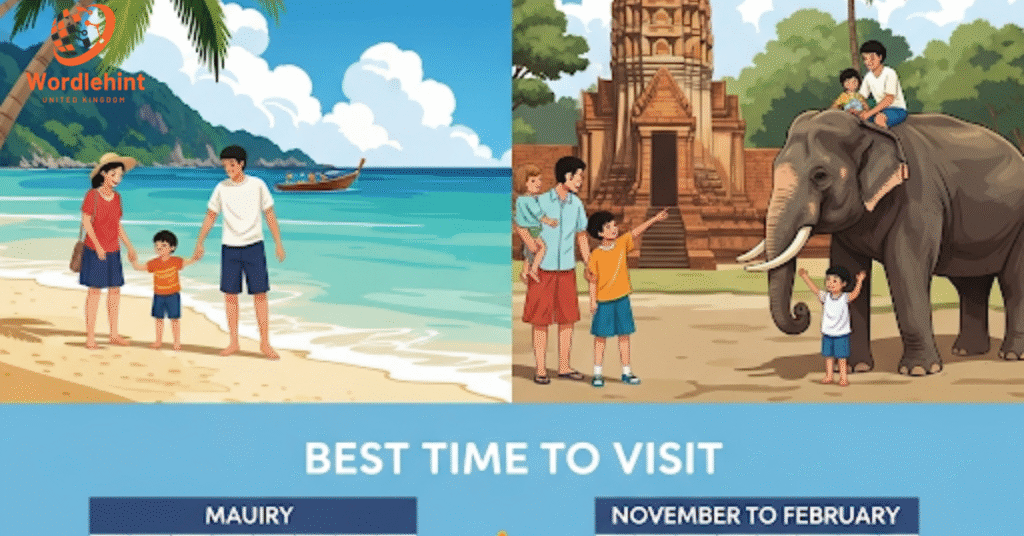
Family Safety Tips While in Thailand
Safety ensures a worry-free Thailand adventure. Simple precautions keep your family secure while enjoying the country’s charm.
Stick to freshly cooked food and bottled water to avoid tummy troubles. Pack familiar snacks for picky eaters. Comprehensive travel insurance covers unexpected medical or trip issues.
Always supervise kids in crowded markets or tourist spots. Thailand’s locals are warm, but stay vigilant. The Tourist Police (1155) are reliable for emergencies and speak English.
Teach kids basic safety rules, like staying close in busy areas. Carry a hotel card with contact details in case anyone gets lost. These steps ensure a stress-free trip.
How to Travel Thailand With Kids: Flights & Transport
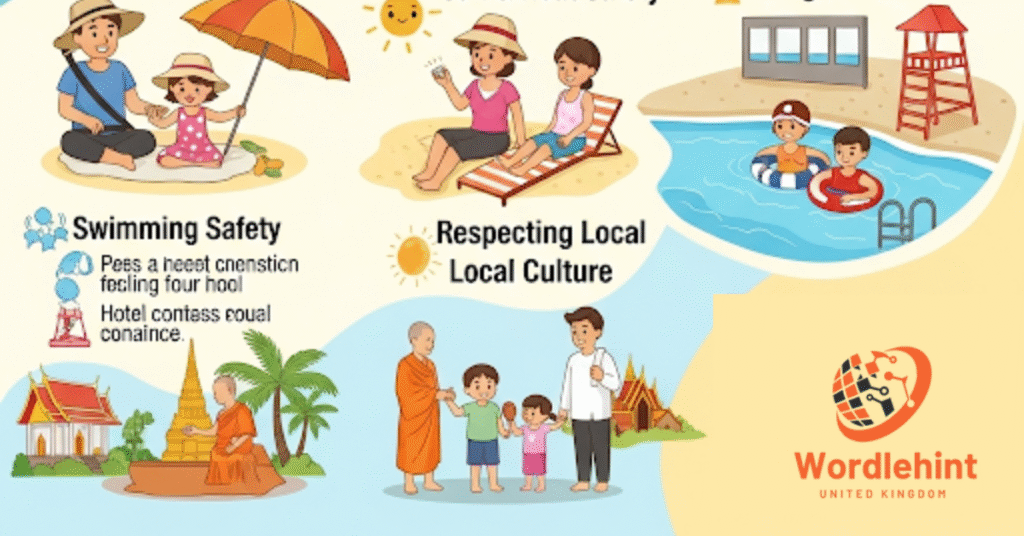
Getting to and around Thailand is straightforward with family-friendly options. Plan transport to keep kids comfortable and stress low.
Booking Flights from Major Countries
Book flights 3–4 months in advance for deals from the US, UK, or Australia. Major airlines like Thai Airways or Emirates offer direct routes to Bangkok. Look for family discounts or extra baggage allowances.
Airport Arrival Tips
Suvarnabhumi Airport (BKK) is modern and family-friendly. Use priority family lanes at immigration and have documents ready. Stick to official taxi counters or pre-booked transfers for safety.
Bangkok Airport Transfers
Choose metered taxis, Grab rides, or airport shuttles for easy transfers. Pre-arrange private vans for larger families. All options are safe and affordable, ensuring a smooth start.
Budgeting & Money Tips for Families
Managing money in Thailand is simple with a bit of planning. Families can stretch their budget while enjoying all the country offer.
Local Currency & Exchange
The Thai Baht (THB) is king. Exchange small amounts at airports, then use local banks or authorized counters for better rates. Carry cash for markets and small vendors.
Using ATMs & Cards
ATMs are plentiful in cities and tourist areas. Use cards with no foreign transaction fees for convenience. Inform your bank of travel plans to avoid card blocks.
Getting Around Thailand with Children
Thailand’s transport options suit families, balancing adventure and comfort. Choose based on your itinerary and kids’ needs.
Trains offer scenic, budget-friendly travel, ideal for older kids who enjoy the journey. Tuk-tuks provide fun, short rides—always negotiate fares first. Bangkok’s BTS Skytrain is fast, clean, and great for city exploration with kids.
Private vans or hired cars are perfect for families, offering flexibility and space. Book through reputable agencies for safety. These options make navigating Thailand’s cities and islands a breeze.
Best Places to Visit in Thailand with Family
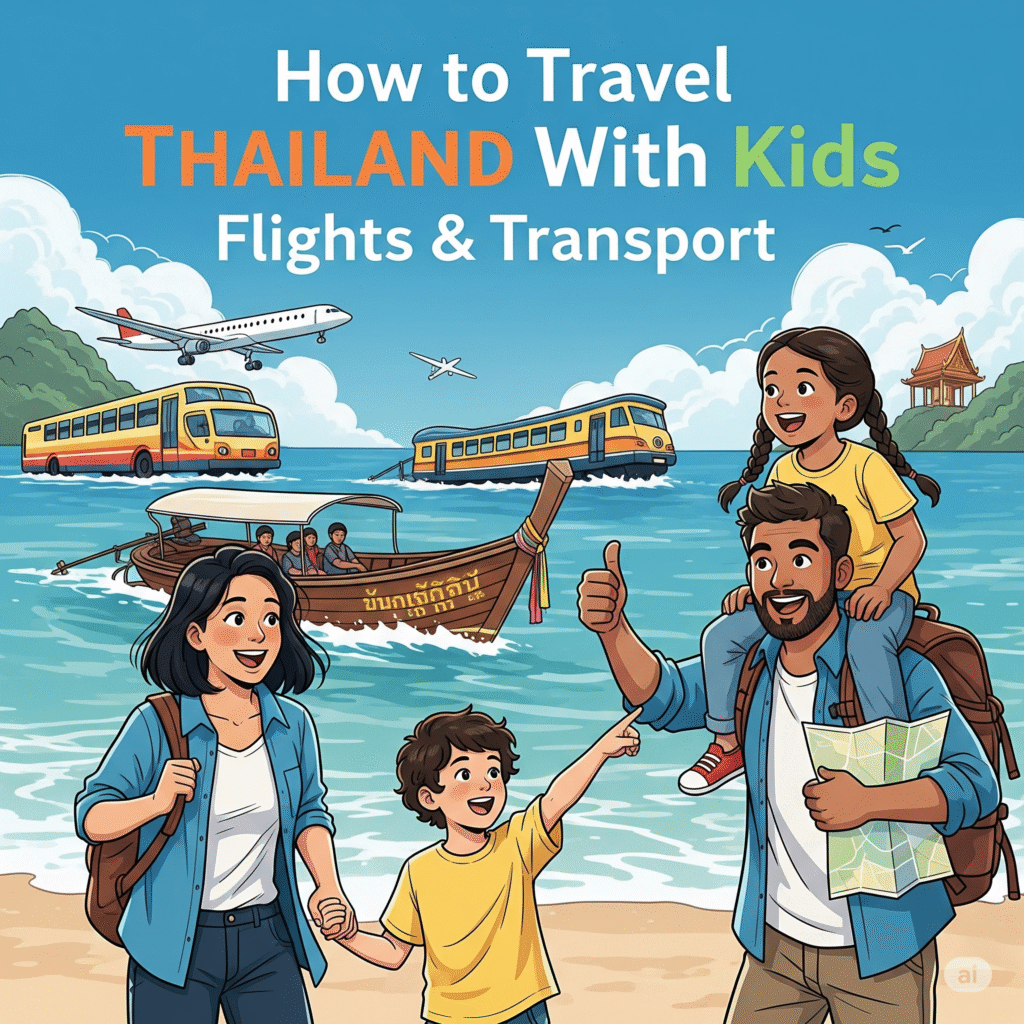
Thailand’s diverse destinations cater to kids and parents alike. These spots blend fun, culture, and relaxation for all ages.
Bangkok: Culture Meets Entertainment
Explore the Grand Palace, kid-friendly Sea Life Aquarium, or Lumpini Park. River cruises offer scenic, relaxing sightseeing. Malls like Siam Paragon have play zones and food courts.
Chiang Mai: Nature & Adventure
Visit ethical elephant sanctuaries, try zip-lining, or shop at night markets. Cooking classes engage kids, while temples offer cultural insights. Chiang Mai’s cool vibe suits families.
Phuket: Beach Bliss & Waterparks
Phuket’s Patong Beach and waterparks like Splash Jungle thrill kids. Family resorts offer pools and activities. Teens love water sports, while toddlers enjoy safe shores.
Koh Samui: All-in-One Island
Koh Samui boasts family resorts, nature trails, and calm beaches. Visit waterfall hikes or enjoy beachside dining. It’s easy to navigate and perfect for all ages.
Koh Lanta: Slow Travel & Tranquility
Koh Lanta’s quiet beaches and low-key vibe suit families seeking calm. Snorkeling and small resorts keep everyone happy. It’s less crowded than other islands.
Khao Sok National Park: Jungle Adventures
Stay in unique treehouses and enjoy canoe tours or guided jungle safaris. Khao Sok’s wildlife and scenery captivate kids and parents seeking nature-filled adventures.
Shopping With Kids in Thailand
Shopping in Thailand is a family adventure. Bangkok’s malls, like MBK, offer kid zones, arcades, and global food chains for easy meals. Night markets in Chiang Mai or Phuket sell souvenirs, toys, and local snacks kids love. Bargain politely and stick to marked stalls to avoid scams. These vibrant spots blend fun and culture, keeping everyone entertained.
How to Interact with Locals: Thai Etiquette for Families
Respecting Thai customs strengthens connections. Teach kids the “wai” greeting a slight bow with palms together to show respect. Dress modestly at temples, covering shoulders and knees. Always smile and stay polite, even in busy markets. Avoid overly pushy vendors and stick to reputable stalls for safe purchases. These habits ensure warm interactions.
Language Tips: Basic Thai Phrases to Know
Learning a few Thai phrases delights locals and helps navigation. Say “Sawasdee” for hello, “Khob Khun” for thank you, and “Chai/Mai” for yes/no. In emergencies, use “Chuay Duay!” for help. Practice these with kids for fun and confidence while exploring Thailand.
FAQs
Is Thailand safe for family travel?
Yes, Thailand is safe with precautions. Stick to tourist areas, supervise kids, and use bottled water. Tourist Police (1155) assist foreigners.
What are the best family resorts in Thailand?
Top picks include Centara in Phuket, Anantara in Koh Samui, and Four Seasons in Chiang Mai for kid-friendly amenities.
When is the cheapest time to visit Thailand?
The rainy season (Jun–Oct) offers lower prices on flights and hotels, with fewer crowds.
Are Thai street foods safe for kids?
Freshly cooked street food from busy stalls is generally safe. Avoid raw items and ensure kids eat familiar snacks if needed.
Do I need a visa for Thailand with kids?
Many nationalities get visa-free entry or visas on arrival. Check requirements based on your country.
What’s the best island in Thailand Family holidays?
Koh Samui and Phuket offer family resorts, safe beaches, and activities for all ages.
How do I keep kids entertained on long flights to Thailand?
Pack games, tablets with movies, snacks, and comfort items like blankets or stuffed toys.
Can I drink tap water in Thailand?
No, stick to bottled water to avoid health issues, especially for kids.
How much money do I need for a 7-day family trip to Thailand?
Budget $1,000–$2,000 for a family of four, depending on accommodation and activities.
What are emergency numbers for tourists in Thailand?
Call 1155 for Tourist Police or 1669 for medical emergencies.
Conclusion
Thailand Family Holidays welcomes families with affordable adventures, rich culture, and stunning nature. From Bangkok’s vibrant streets to Koh Samui’s tranquil beaches, it’s a perfect first-time international destination.
With proper planning passports, vaccinations, and smart packing your trip will be seamless. Embrace Thai hospitality, try local foods cautiously, and explore with confidence. This guide equips you for a memorable Thailand family holidays filled with joy and discovery.
Blog
1. Introduction to Bowling Ball Beach, California
-
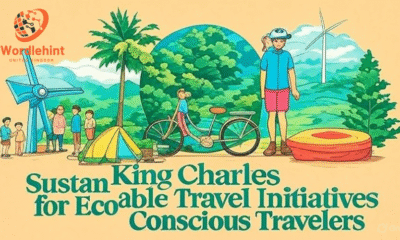
 Blog4 weeks ago
Blog4 weeks agoKing Charles Sustainable Travel Initiatives A Green Royal Vision
-

 Blog3 months ago
Blog3 months agoLuxury Villas in Italy Le Collectionist Live the Italian Dream
-

 Blog2 months ago
Blog2 months agoLuxury Villas Greece Le Collectionist – Inside Their Exclusive Collection (2025)
-

 Blog3 months ago
Blog3 months agoWho Was Anna Zauner from Simi Valley?
-

 Blog1 month ago
Blog1 month agoLuxury Villas Provence Le Collectionist – Ultimate Guide 2025
-

 Blog2 months ago
Blog2 months agoSelena Green Vargas Biography, Fame & Disappearance
-

 Blog1 month ago
Blog1 month agoLuxury Villas Ibiza Le Collectionist Top Private Retreats for 2025
-

 Blog7 days ago
Blog7 days agoHow Old Is America? A Complete Guide to Its Real Age & History










